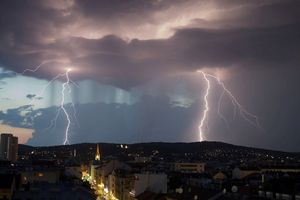Thunderstorm asthma, a phenomenon that is no longer so rare?
Thunderstorm asthma or why can thunderstorms cause severe exposure?
Normally, precipitation dampens the intensity of the pollen load. Precipitation that lasts longer than 2-3 hours has been proven to wash the pollen out of the air. So why does the pollution increase so much during thunderstorms?
There are several reasons for this. One important reason is that when it rains, the pollen concentration in the air rises sharply in the first half hour because the rain pushes the pollen that is floating high into lower layers of the air.
In addition, allergens that have already settled (pollen grains deposited on the ground) are stirred up again by the rain. This multiplies the allergen content in the air.
In addition, increased lightning activity can lead to pollen bursting and thus to increased allergen concentrations in the air. This can subsequently lead to thunderstorm asthma. Thunderstorm asthma is a rare phenomenon that now occurs more frequently, especially in spring and summer, when the concentration of pollen in the air is very high and there is also lightning and thunder. The decisive factor is the combination of lots of pollen and fungal spores, strong winds and high ozone levels. For these reasons, we have also integrated the severe weather warning and the ozone values into our Pollen+ app. We hope this will save you additional complications!


